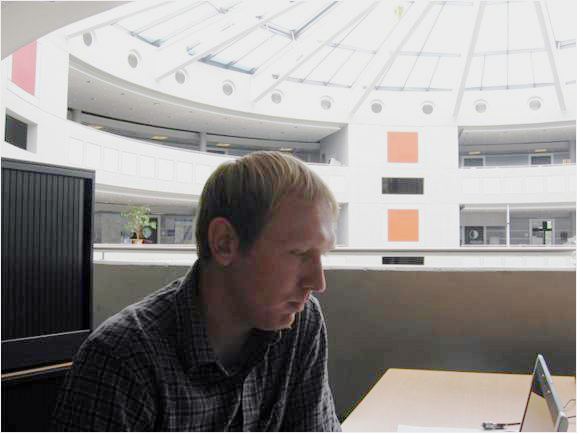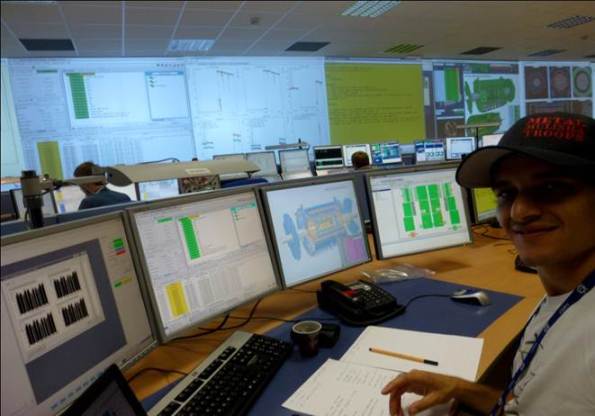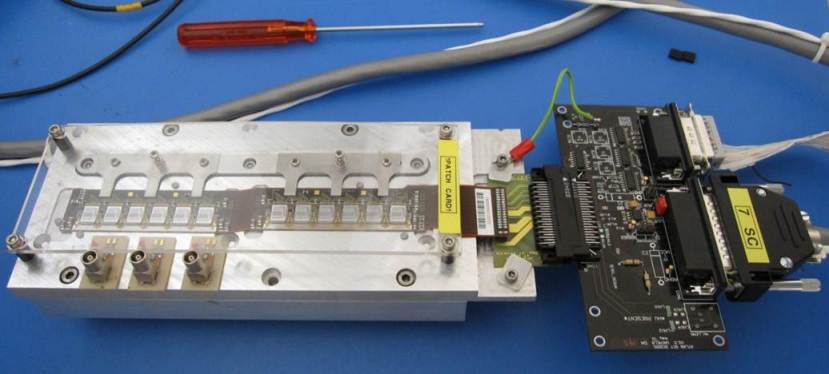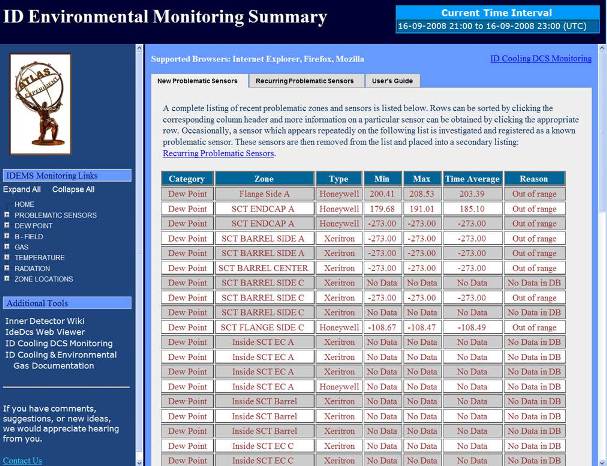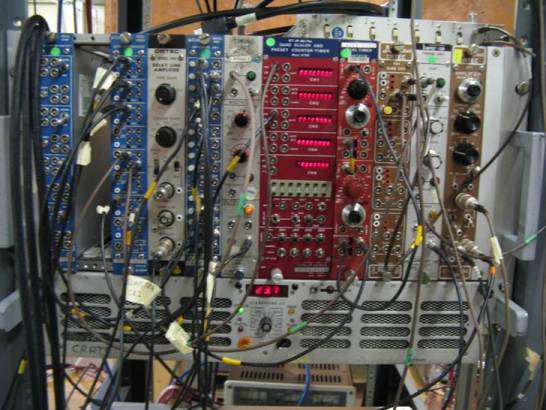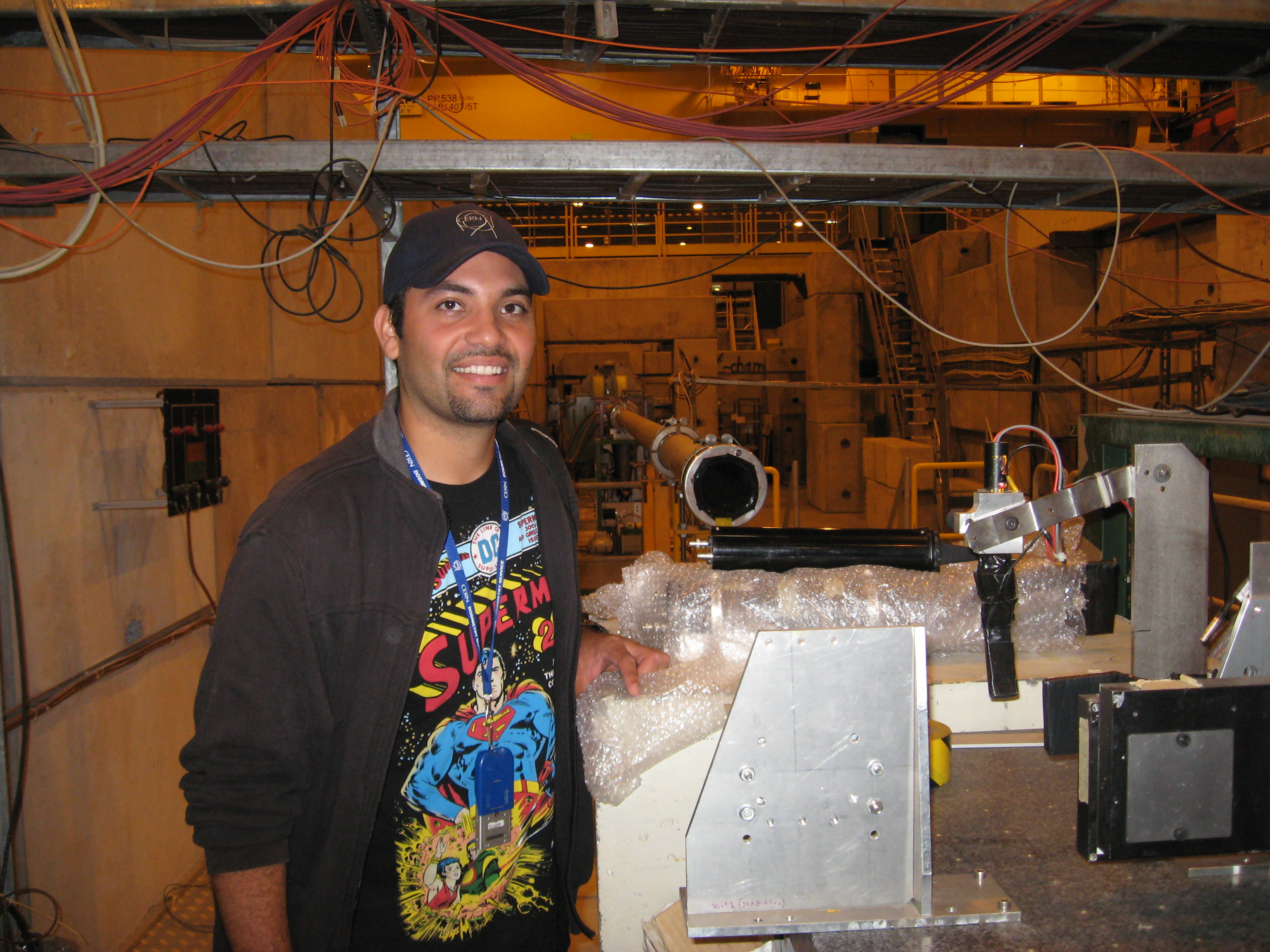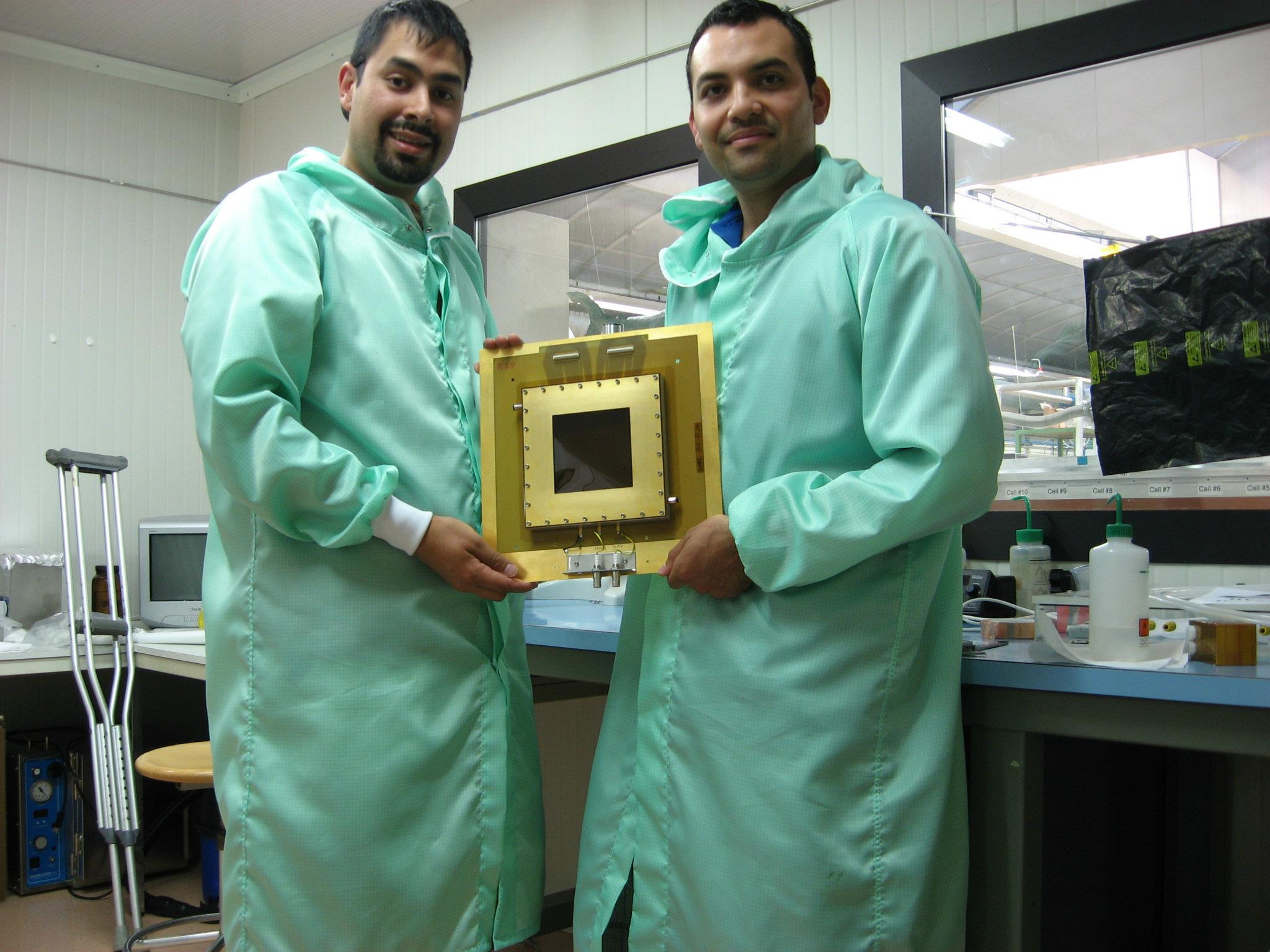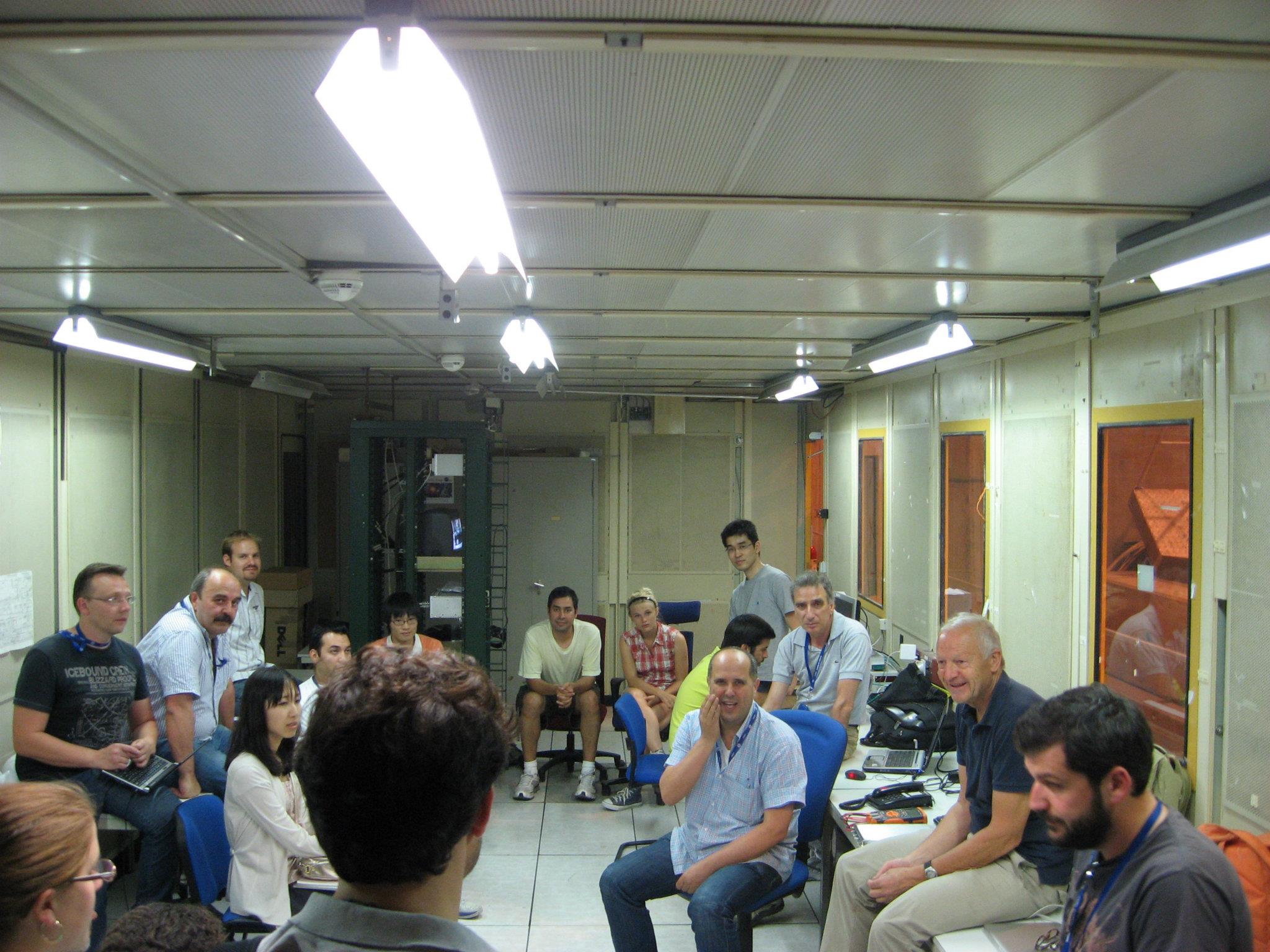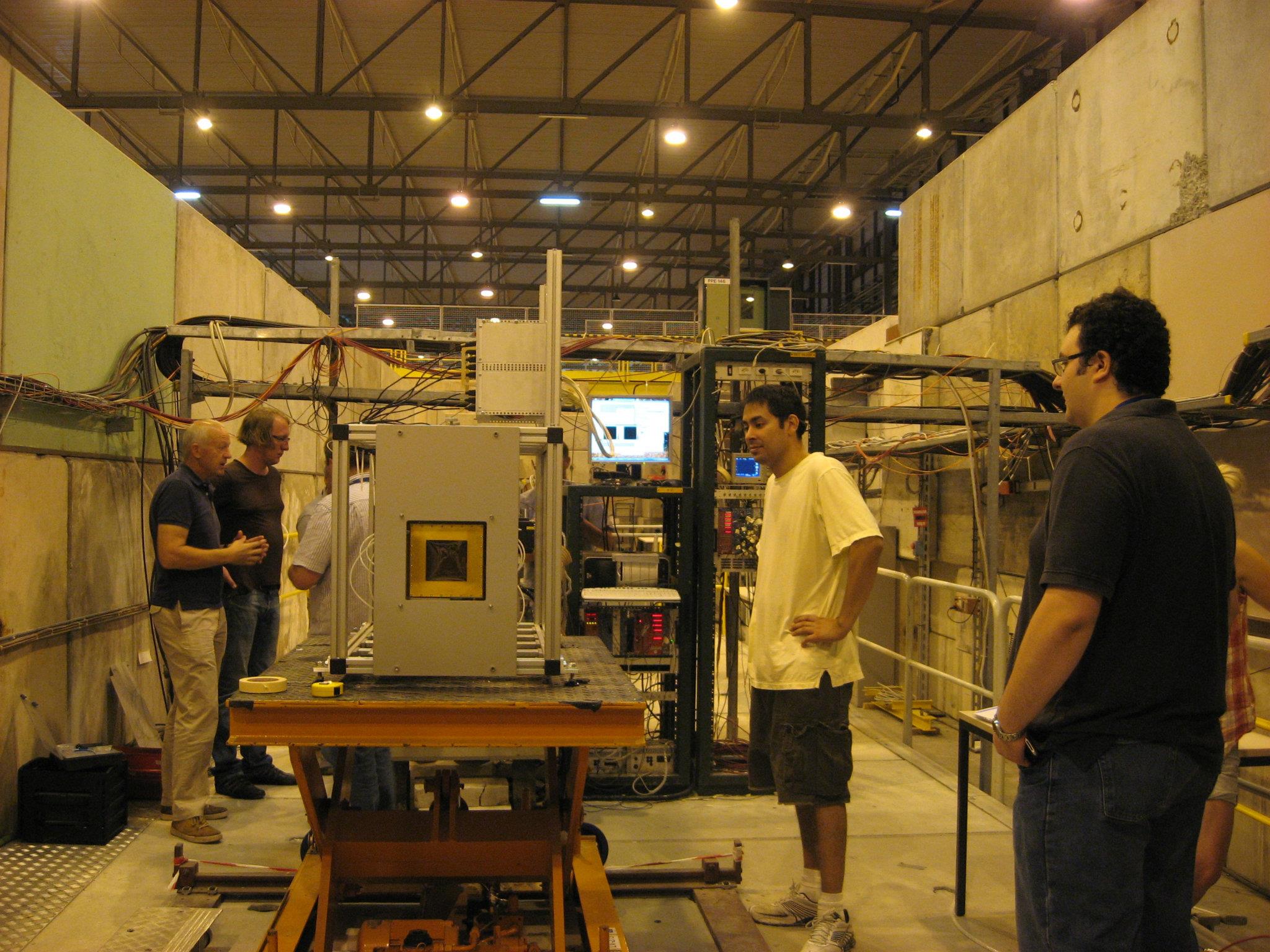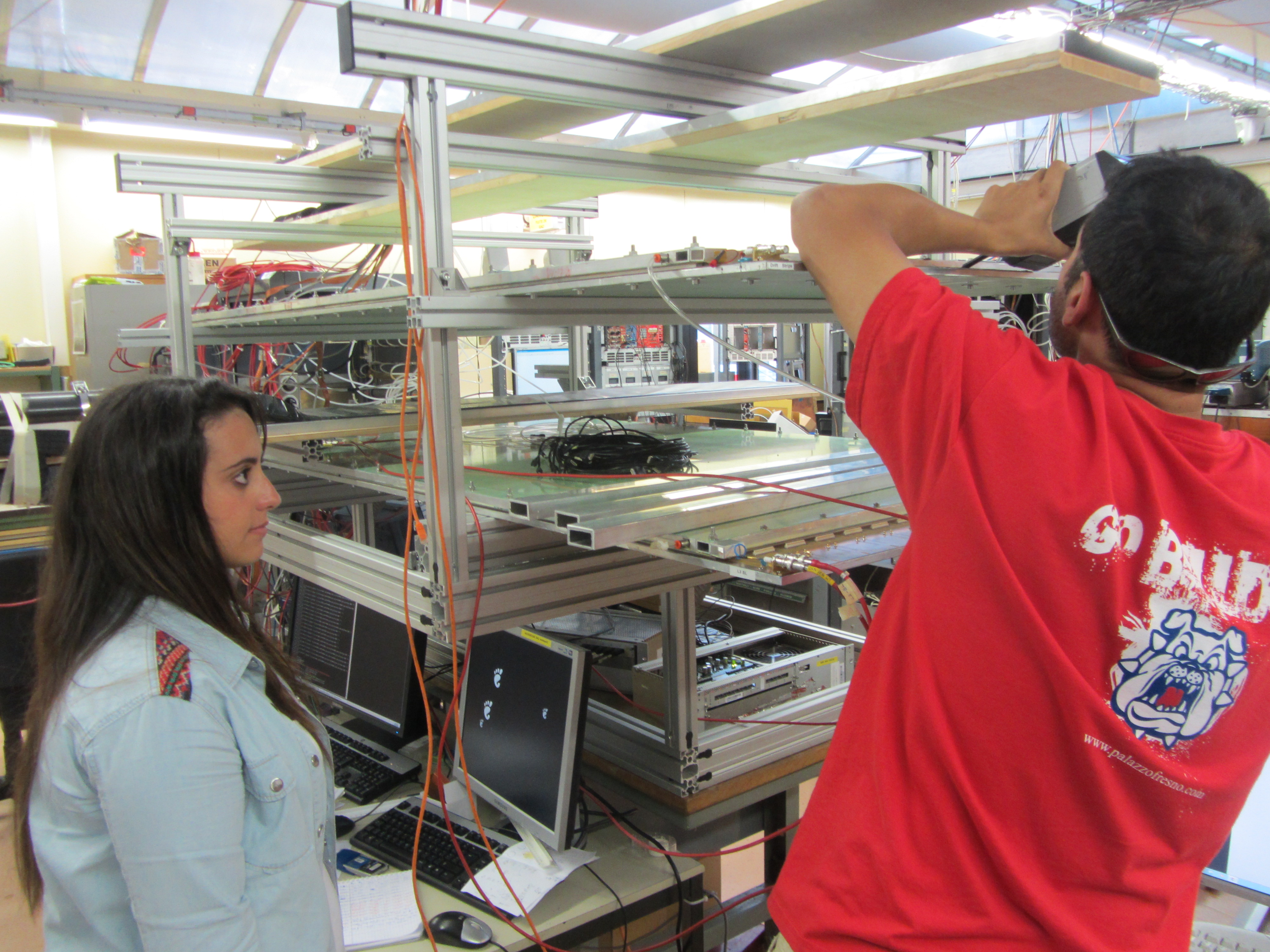Adding New Features to Virtual Point One (VP1)
Inner Detector Environmental Monitoring Summary (IDEMS)
Lawrence Carlson, a physics major at CSU Fresno, worked at CERN during summer of 2008 on IDEMS interface with the ATLAS Inner Detector Services (IDS) team (Dr. Steve McMahon, Dr. Saverio D'Auria, Dr. Urban Bitenc, Dr. Illona Kostyukhina, Dr. Luca Luisa, and Dr. Charlie Young). Carlson was supported by College of Science and Mathematics (CSM), Instructionally Related Activities (IRA) from Associated Studetns Inc. (ASI), and Faculty Sponsored Student Research (FSSR) of Fresno State. Carlson's project is to provide near real-time data analysis and weekly summaries on environmental variables using web-based tools and display these results graphically in the control room. The environmental variables include radiation level, magnetic field, temperature, gas, dew point measurements from over 1200 sensors. Carlson presented his work at Pixel working group meetings and continued working on this project after returning from CERN. He completed the project, with more than 50,000 lines of code, and released it to the ATLAS Inner Detector community by the end of 2008. His tools have been parts of the IDEMS in ATLAS Control Room during the ongoing ATLAS data taking. Carlson also worked at CERN and Stanford Linear Accelerator Center (SLAC) during summers of 2009, 2010, and 2011.
Semi-Conductor Tracker (SCT) Fatal Charge Dosage Study
James MacDougall, a physics major from CSU Sacramento, worked at CERN during summer of 2009 on SCT fatal charge dosage study with ATLAS physicists Dr. Steve McMahon from Rutherford Appleton Laboratory (RAL) in UK and Dr. Charlie Young from Stanford Linear Accelerator Center (SLAC). MacDougall was supported by Hu Institute Summer Research Grant of CSU Sacramento. SCT, being closest to the interaction region where small Big-Bangs are created, is potentially subject to various beam loss scenarios. A clear understanding of the susceptibility of the SCT components to damages from beam loss is essential for the safe operation of the detector system. In beam loss scenarios the weak link within the modules appears to be the ABCD asic. This application specific integrated circuit is warranted by the manufacturers to withstand a 5nC charge application within 25ns, which is the period of the LHC bunch crossing. MacDougall built up test stand to validate the 5nC threshold, investigated the chip vs. charge performance in the region above 5nC, and derived charge dosage parameters for use in subsequent laser and testbeam exposures.
In repetitive tests, both single-channel and multi-channel charge injections, the 5nC/25ns/chip safety threshold was validated. Single channel were found to withstand in excess of 65,000 repetitive charge pulses, over periods of several milliseconds, at various pulse time constants. It was confirmed that the ABCD chip does possess some significant additional protection above 5nC. The single channel electronic components and/or bonding connections were determined to be the experimental weak link and acting as protection links for the ABCD chip. Preliminary microscopic investigation yielded no indication of physical failure point.
The results were presented twice to interested parties of the inner detector community at CERN. MacDougall also presented this work to faculty and students at physics colloquia on both the CSU Sacramento and CSU Fresno campuses. A project paper was also prepared which describes in detail the background, execution and results of the experiment. The paper was circulated to interested parties of the ATLAS inner detector community.
Frequency Scanning Interferometry (FSI) Laser Coupling Upgrade
James MacDougall, a physics graduate student at Fresno State, worked at CERN during summer of 2012. He investigated the data output of the FSI subsystem of the ATLAS Inner Detector. MacDougall was supported by College of Science and Mathematics (CSM) and Instructionally Related Activities (IRA) from Associated Studetns Inc. (ASI) of Fresno State.
FSI monitors the physical shape of the detector in real time and is intended to improve the accuracy of subatomic particle tracking. The system had never fulfilled its expectations and was on the verge of being terminated due to its high cost of operation and lack of contribution. However, following initial orientation to FSI and the opportunity to observe the details of the system, James was able to identify and demonstrate a hardware issue which is at the root of the system's dysfunction. Under the supervision of a FSI colleague, Dr. Zhijun Liang, James executed an innovative temporary correction which validated the observed dysfunction. This result was presented at the following FSI group meeting where further study of the problem was suggested. A critical element of the FSI system is the coupling of free space lasers into single mode optical fibers. Subsequently, James devised and presented a proposal for an FSI Laser Coupling Upgrade which generated significant improvements in the performance of the system.Because of the visible and significant contribution to FSI by James MacDougall, ATLAS FSI group invited James to return to CERN to work on FSI for another 3 months. ATLAS experiment paid his airfare, hotel, and salary for James to return to CERN from September to December of 2012.
ATLAS e-News
-
Program officers at NSF's Office of International Science and Engineering (OISE) were impressed by
McGovern's work and contacted Prof. Yongsheng Gao to offer support for McGovern's CERN trip. McGovern received $7650 (stipend of $3600, travel of $1350, and
subsistence of $2700) from NSF's OISE in Nov. of 2010 for her work at CERN.
Searching for W and Z Bosons from First ATLAS Data
Brent Wilson, a physics graduate student at Fresno State, worked at CERN on W and Z Bosons physics analyses with first ATLAS data during summer of 2010. Wilson was supported by College of Science and Mathematics (CSM) and Instructionally Related Activities (IRA) from Associated Studetns Inc. (ASI) of Fresno State. W and Z bosons are carriers of the weak force and their discoveries by UA1 and UA2 experiments at CERN in 1983 received the Nobel Prize in Physics in 1984.
Muon Detector R&D for ATLAS Upgrade
-
Moskaleva's specific contributions include assisting to develop LabView code specifically for the MicroMegas detector and creating an event display.
In the laboratory, there were four main MicroMegas detectors with slight differences between each other: R11, R12, and R13. She worked extensively in
the laboratory testing the following attributes of the MicroMegas detector
|
-
Alexandra Moskaleva also participated in a test beam in July 2010, and contributed by covering eight eight-hour shifts, totaling
64 hours. During her stay at CERN, she also helped to set up experiments and take and record measurements, while monitoring data quality. Moskaleva
gave several talks, poster presentation and colloquium at CSU Sacramento on her CERN work. She also gave a poser presentation at American Physical
Society (APS) meeting in April of 2010 titled "Investigating a Candidate for ATLAS Muon System Upgrade".
New ATLAS Simulation Packages NLOjet++ and APPLGrid
After returning from CERN in fall 2011, Rad has been continuing his work with ATLAS Jet Cross Section working group. He returned to work at DESY (The Deutsches Elektronen-Synchrotron) in Germany during summer of 2012 on NLOjet++ and APPLGrid which will significantly reduce the Monte Carlo simulation time comparing with old simulation packages like Pythia. This will be very useful for many future physics analyses on ATLAS. Navid gave poster presentation at the Central California Research Symposium in April 2012 and won the "Best Graduate Student Poster Presentation Award". He gave one presentation to ATLAS Jet Cross-Section Working Group during summer of 2012.
Micromegas R&D for ATLAS Muon Detector Upgrade
Emmanuel Angulo and Lawrence Carlson, physics graduate and undergraduate students at Fresno State, worked at CERN during summer of 2011 on micromegas R&D projects for ATLAS muon detector upgrade led by Dr. Joerg Wotschack of CERN. Angulo and Carlson were supported by College of Science and Mathematics (CSM) and Instructionally Related Activities (IRA) from Associated Studetns Inc. (ASI) of Fresno State. They developed and tested the micromegas detector and presented their results twice at the Micromegas R&D working group meetings at CERN. They also participated in test beam activities at CERN in July 2011. Emmnauel was invited to give the Conclusion Panel Presentation at the Central California Research Symposium in April of 2012. This is a great honor for him, our ATLAS program, and physics department.
Emmanuel Angulo and undergraduate student Simon Gonzalez worked at CERN again during summer of 2012. Angulo and Gonzalez were supported by College of Science and Mathematics (CSM) and Instructionally Related Activities (IRA) from Associated Studetns Inc. (ASI) of Fresno State. They continued working on micromegas R&D projects for ATLAS muon detector upgrade and have given 5 talks at ATLAS muon R&D working group meetings during summer of 2012. Their work includes performing different lab experiments at CERN, functional uniformity results of a new T-series chamber design, etc.
Simon Gonzalez from Fresno State and Brandon Ausmus from CSU Channel Islands worked at CERN during summer of 2013. Gonzalez was supported by College of Science and Mathematics (CSM) and Instructionally Related Activities (IRA) from Associated Studetns Inc. (ASI) of Fresno State and Ausmus was supported by CSU Channel Islands. They worked on micromegas R&D projects for ATLAS muon detector upgrade and performed various mechanical measurements and tests of micromegas L2 panel. They have given 2 talks at ATLAS muon R&D working group meetings during summer of 2013 about their findings.
Improving Monte Carlo Simulation for Searching for Excited W* Boson
Improving FastTrack Trigger for ATLAS Trigger and Data Acquisition (DAQ)
Gradon Faulkner is a physics major from CSU Channel Islands. He worked with ATLAS physicists Dr. Alberto Annovi from INFN Laboratori Nazionali di Frascati and Dr. Wainer Vandelli from CERN of the ATLAS Trigger and Data Acquisition (DAQ) team during summer of 2013. Faulkner was supported by CSU Channel Islands. Trigger/DAQ is key for ATLAS data collection. The ATLAS experiment is developing a FastTrack trigger for real-time reconstruction of charged trajectories in the full Inner Detector. The FastTracker uses Associative Memories to associate hit positions into tracks by comparing all detected hits with a set of pre-calculated trajectories called patterns. In order to cover all possible trajectories of interest with the desired resolution 1 billion patterns are needed, corresponding to an Associative Memory device with 1 billion locations.
Faulkner studied a new way to prepare patters and did an excellent job in developing a preliminary optimization algorithm for the ATLAS hardware tracker (FTK). The algorithm searches for track pattern grouping schemes that allow a reduction of the pattern data without affecting the physics performance. It will result in a higher overall efficiency of the FastTracker system. Faulkner gave two presentations at ATLAS Trigger/DAQ working group meetings at CERN.
New ATLAS Inner Tracker Visualizer and Simulator Packages
Varahamurthy made excellent progress in visualization, construction and simulation in these packages. Geometry package was used extensively for visualization which was implemented in C++ using ROOT. Varahamurthy encoded positional and rotational data into transformation matrices with ROOT geometry package. He implemented custom TrackerModule, TrackerRing and TrackerLayer classes in construction. He also implemented custom track class as basic charged particle track descriptor in simulation and hit detection is handled by each module independently. Varahamurthy's work was presented to ATLAS Inner Detector working group meeting.
Simulation Using ATHENA with ATLAS Grid Computing Tier 3 Facility of Fresno State
Modeling of Higgs Coupling Analysis at the LHC
|
